
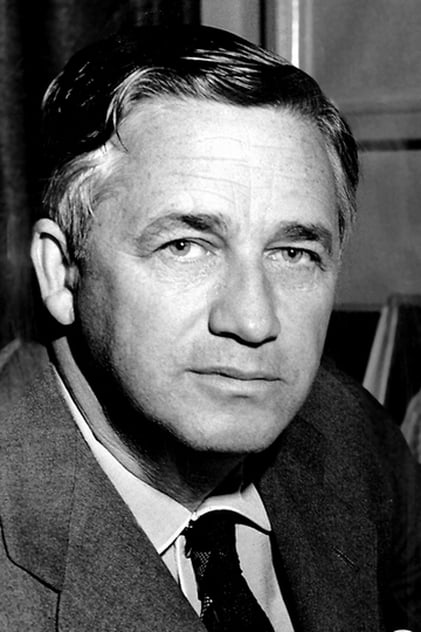
Mervyn LeRoy
Born: October 15, 1900
Died: September 13, 1987
in San Francisco, California, USA
Died: September 13, 1987
in San Francisco, California, USA
Mervyn LeRoy was an American film director, producer, and sometime actor.
LeRoy worked in costumes, processing labs and as a camera assistant until he became a gag writer and actor in silent films, including The Ten Commandments in 1923. LeRoy credits Ten Commandments director, Cecil B. DeMille, for inspiring him to become a director: "As the top director of the era, DeMille had been the magnet that had drawn me to his set as often as I could go." LeRoy also credits DeMille for teaching him the directing techniques required to make his own films.
His first directing job was with First National Pictures on 1927's No Place to Go. LeRoy ended up working at Warner Bros. after they took control of First National. When his movies made lots of money without costing too much, he became well received in the movie business. He directed two key films which launched Edward G. Robinson into major stardom, the Oscar-nominated critique of tabloid journalism Five Star Final, and the classic gangster film Little Caesar, which made his mark. From that point forward, LeRoy would be responsible for a diverse variety of films as a director and producer. The following year's I Am a Fugitive from a Chain Gang was also nominated for the Academy Award for Outstanding Production as was his Anthony Adverse.
In 1938 he was chosen as head of production at MGM, where he was responsible for the decision to make The Wizard of Oz. He was responsible for discovering Clark Gable, Loretta Young, Robert Mitchum, and Lana Turner. His 1941 film Blossoms in the Dust was nominated for the Academy Award for Outstanding Motion Picture. His first big hit as a director with MGM was 1942's Random Harvest which was their biggest of the season earning worldwide rentals of $8 million and for which he was nominated for the Academy Award for Directing. The film was also nominated for the Academy Award for Outstanding Motion Picture. He hit big again two years later with Thirty Seconds Over Tokyo with rentals of $6 million.
In 1951, he scored his biggest hit with Quo Vadis earning worldwide rentals of $21 million as well as a nomination for the Academy Award for Best Motion Picture. In the early 1950s, LeRoy directed such musicals as Lovely to Look At, Million Dollar Mermaid, Latin Lovers and Rose Marie.
He returned to Warner Brothers in 1955, where he took over from John Ford as director on Mister Roberts, another big hit, which was also nominated for the Academy Award for Best Motion Picture. He also directed films for Warners such as The Bad Seed, No Time for Sergeants, The FBI Story, and Gypsy.
He received an honorary Oscar in 1946 for The House I Live In, "for tolerance short subject", and the Irving G. Thalberg Memorial Award in 1976. A total of eight movies Mervyn LeRoy directed or co-directed were nominated for Best Picture at the Oscars, one of the highest numbers among all directors.
LeRoy worked in costumes, processing labs and as a camera assistant until he became a gag writer and actor in silent films, including The Ten Commandments in 1923. LeRoy credits Ten Commandments director, Cecil B. DeMille, for inspiring him to become a director: "As the top director of the era, DeMille had been the magnet that had drawn me to his set as often as I could go." LeRoy also credits DeMille for teaching him the directing techniques required to make his own films.
His first directing job was with First National Pictures on 1927's No Place to Go. LeRoy ended up working at Warner Bros. after they took control of First National. When his movies made lots of money without costing too much, he became well received in the movie business. He directed two key films which launched Edward G. Robinson into major stardom, the Oscar-nominated critique of tabloid journalism Five Star Final, and the classic gangster film Little Caesar, which made his mark. From that point forward, LeRoy would be responsible for a diverse variety of films as a director and producer. The following year's I Am a Fugitive from a Chain Gang was also nominated for the Academy Award for Outstanding Production as was his Anthony Adverse.
In 1938 he was chosen as head of production at MGM, where he was responsible for the decision to make The Wizard of Oz. He was responsible for discovering Clark Gable, Loretta Young, Robert Mitchum, and Lana Turner. His 1941 film Blossoms in the Dust was nominated for the Academy Award for Outstanding Motion Picture. His first big hit as a director with MGM was 1942's Random Harvest which was their biggest of the season earning worldwide rentals of $8 million and for which he was nominated for the Academy Award for Directing. The film was also nominated for the Academy Award for Outstanding Motion Picture. He hit big again two years later with Thirty Seconds Over Tokyo with rentals of $6 million.
In 1951, he scored his biggest hit with Quo Vadis earning worldwide rentals of $21 million as well as a nomination for the Academy Award for Best Motion Picture. In the early 1950s, LeRoy directed such musicals as Lovely to Look At, Million Dollar Mermaid, Latin Lovers and Rose Marie.
He returned to Warner Brothers in 1955, where he took over from John Ford as director on Mister Roberts, another big hit, which was also nominated for the Academy Award for Best Motion Picture. He also directed films for Warners such as The Bad Seed, No Time for Sergeants, The FBI Story, and Gypsy.
He received an honorary Oscar in 1946 for The House I Live In, "for tolerance short subject", and the Irving G. Thalberg Memorial Award in 1976. A total of eight movies Mervyn LeRoy directed or co-directed were nominated for Best Picture at the Oscars, one of the highest numbers among all directors.
Movies for Mervyn LeRoy...
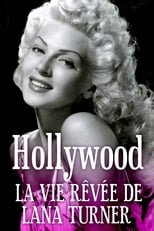
Title: Hollywood, la vie rêvée de Lana Turner
Character: Self (archive footage)
Released: May 22, 2019
Type: Movie
Portrait of Julia Jean Turner, from her childhood to her rise of fame as Lana Turner, to her last role.


Title: Ingrid Bergman: In Her Own Words
Character: Self (archive footage)
Released: August 27, 2015
Type: Movie
A personal and captivating account of the extraordinary life and work of Ingrid Bergman (1915-82), a young Swedish woman who became one of the most celebrated actresses in world cinema.

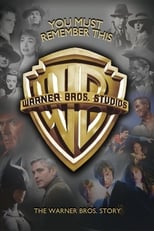
Title: You Must Remember This: The Warner Bros. Story
Character: Self (archive footage)
Released: May 15, 2008
Type: Movie
Jack L. Warner, Harry Warner, Albert Warner and Sam Warner were siblings who were born in Poland and emigrated to Canada near the turn of the century. In 1903, the brothers entered the budding motion picture business. In time, the Warner Brothers moved into film production and would open their own studio in 1923.

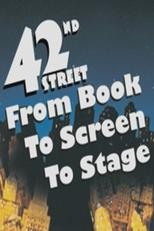
Title: 42nd Street: From Book to Screen to Stage
Character: Self (archive footage)
Released: March 21, 2006
Type: Movie
Making-of documentary about the 1933 musical, 42nd Street.


Title: The Wonderful Wizard of Oz: 50 Years of Magic
Character: Self (archive footage)
Released: February 20, 1990
Type: Movie
Documentary about the making of the 1939 MGM classic film The Wizard of Oz. Includes interviews of cast and crew members, their families and fans of the film.

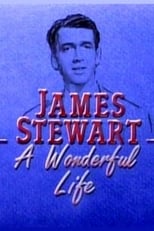
Title: James Stewart: A Wonderful Life
Character: Self (archive footage)
Released: November 22, 1988
Type: Movie
Documentary about James Stewart's long career as an actor and positive personal life.


Title: The Making of a Legend: Gone with the Wind
Character: Self (archive footage)
Released: October 1, 1988
Type: Movie
This documentary revisits the making of Gone with the Wind via archival footage, screen tests, insightful interviews and rare film footage.


Title: Hollywood Out-takes and Rare Footage
Character: Self (archive footage) (uncredited)
Released: February 25, 1983
Type: Movie
Out-takes (mostly from Warner Bros.), promotional shorts, movie premieres, public service pleas, wardrobe tests, documentary material, and archival footage make up this star-studded voyeuristic look at the Golden age of Hollywood during the 30s, 40, and 50.

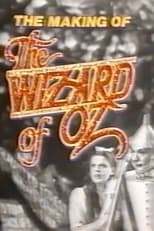
Title: The Making of the Wizard of Oz
Character: Self
Released: January 1, 1979
Type: Movie
The time was 1938. The place, Hollywood. This is the story of one of the 456 films made that year, how it was made, and why it has endured.


Title: Tonight Starring Jack Paar
Character: Self
Released: July 29, 1957
Type: TV
Tonight Starring Jack Paar is an American talk show hosted by Jack Paar under The Tonight Show franchise from 1957 to 1962. It originally aired during late-night.
During most of its run it was broadcast from Studio 6B inside the RCA Building. The same studio would also host early episodes of The Tonight Show Starring Johnny Carson, and Late Night with Jimmy Fallon. Its theme song was an instrumental version of "Everything's Coming Up Roses", and the closing theme was "So Until I See You" by Al Lerner.

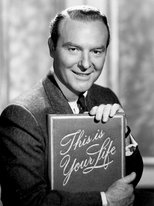
Title: This Is Your Life
Character: Self
Released: October 1, 1952
Type: TV
This Is Your Life is an American television documentary series broadcast on NBC, originally hosted by its producer, Ralph Edwards from 1952 to 1961. In the show, the host surprises a guest, and proceeds to take them through their life in front of an audience, including special guest appearances by colleagues, friends and family.
Edwards revived the show in 1971-72, while Joseph Campanella hosted a version in 1983. Edwards returned for some specials in the late 1980s, before his death in 2005. The show originated as a radio show on NBC Radio airing from 1948 to 1952.


Title: Rome, the Eternal City
Character: Self
Released: January 21, 1951
Type: Movie
A Traveltalk style documentary look at Rome.

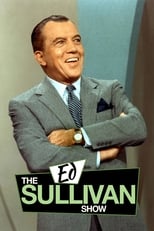
Title: The Ed Sullivan Show
Character: Self
Released: June 20, 1948
Type: TV
The Ed Sullivan Show is an American TV variety show that originally ran on CBS from Sunday June 20, 1948 to Sunday June 6, 1971, and was hosted by New York entertainment columnist Ed Sullivan. It was replaced in September 1971 by the CBS Sunday Night Movie, which ran only one season and was eventually replaced by other shows.
In 2002, The Ed Sullivan Show was ranked #15 on TV Guide's 50 Greatest TV Shows of All Time.


Title: Cavalcade of the Academy Awards
Character: Self
Released: July 31, 1940
Type: Movie
This 1940 presentation features highlights of earlier (1928 onward) Oscar ceremonies including Shirley Temple and Walt Disney, plus acceptance speeches for films released in 1939 with recipients and presenters including Vivien Leigh, Judy Garland, Hattie McDaniel, Fay Bainter, Mickey Rooney, Thomas Mitchell, Sinclair Lewis, and more, with host Bob Hope.

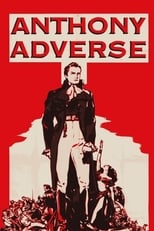
Title: The Making of a Great Motion Picture
Released: April 15, 1936
Type: Movie
Narrated documentary of the making of Anthony Adverse (1936), featuring many clips from the actual film.

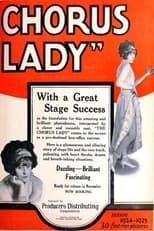
Title: The Chorus Lady
Character: Duke (the jockey)
Released: November 23, 1924
Type: Movie
When her latest show closes, Pat O'Brien returns home. The stable owned by her fiancé, Dan Mallory, catches fire, and Pat helps save his prize horse, Lady Belle, who is blinded. Because of the fire, Pat and Dan have to put their wedding plans on hold, and Pat returns to the stage.

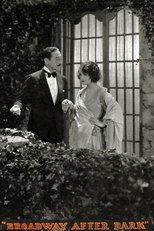
Title: Broadway After Dark
Character: Carl Fisher
Released: May 19, 1924
Type: Movie
Ralph Norton, man-about-town and wealthy favorite in Broadway society circles, is attracted to Helen Tremaine, but her flirtatious behavior causes him to reject the superficial life of his set.


Title: The Call of the Canyon
Character: Jack Rawlins
Released: December 16, 1923
Type: Movie
Returning from World War I, Glenn Kilbourne travels to Arizona to regain his health. He meets a local girl, Flo Hutler, who helps him recover. His fiancee, Carley Burch, follows him to Arizona but soon decides she'd rather go back to New York. When Flo is badly hurt in an accident, Glenn decides to repay her for her help in bringing him back to health by proposing marriage.

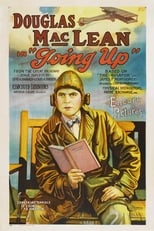
Title: Going Up
Character: The Bellboy
Released: September 30, 1923
Type: Movie
Going Up (1923)


Title: Little Johnny Jones
Character: George Nelson, Jockey
Released: August 12, 1923
Type: Movie
Jockey Johnny Jones is hired to ride The Earl of Bloomsburg's horse at the English Derby. Crooked gambler Robert Anstead frames Johnny as a thief and kidnaps his sweetheart in order to make Johnny throw the race. Will he succeed?

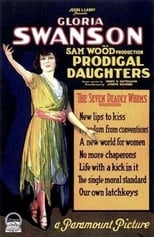
Title: Prodigal Daughters
Character: Newsboy
Released: April 15, 1923
Type: Movie
Elinor "Swifty" Forbes and her younger sister Marjory are the carefree daughters of wealthy J. D. Forbes. Their mother shows no restraint over her daughters, so they live among the flapper set. Lester Hodges, a songwriter, is enamored of Marjory, while Garside, who runs a card room, is interested in Swifty. While gambling at Garside's place, Swifty meets Roger Corbin, who works as an engineer at her father's business. Corbin falls in love with Swifty. When Mr. Forbes protests against both his daughters' behavior, they move out. Marjory marries Hodges, but eventually leaves him and returns to her parents. Swifty, who has gambled herself into debt, agrees to marry Garside. But when the couple are together in a café, prohibition agents raid the place.


Title: My American Wife
Character: Extra
Released: December 31, 1922
Type: Movie
A 1922 film.
